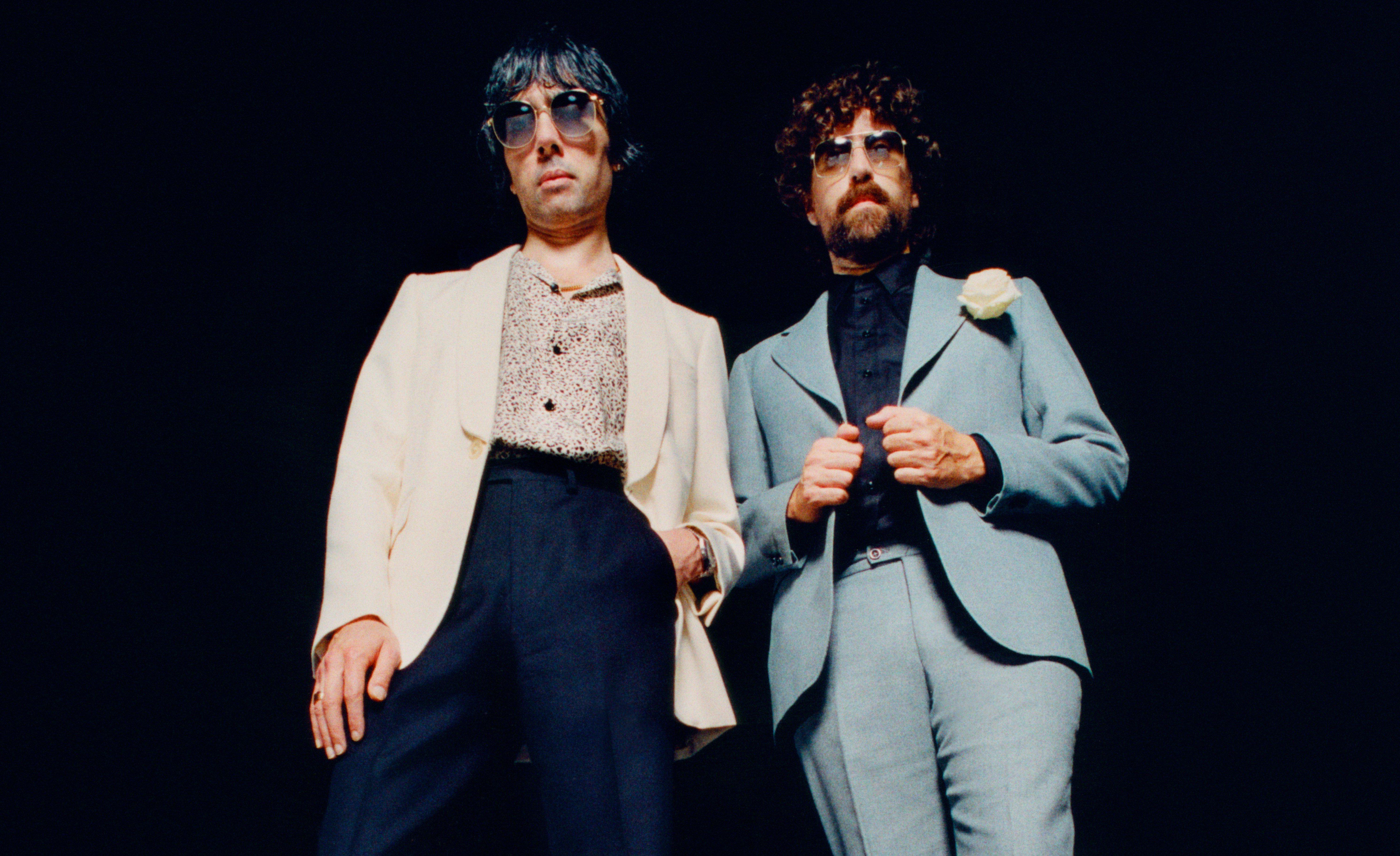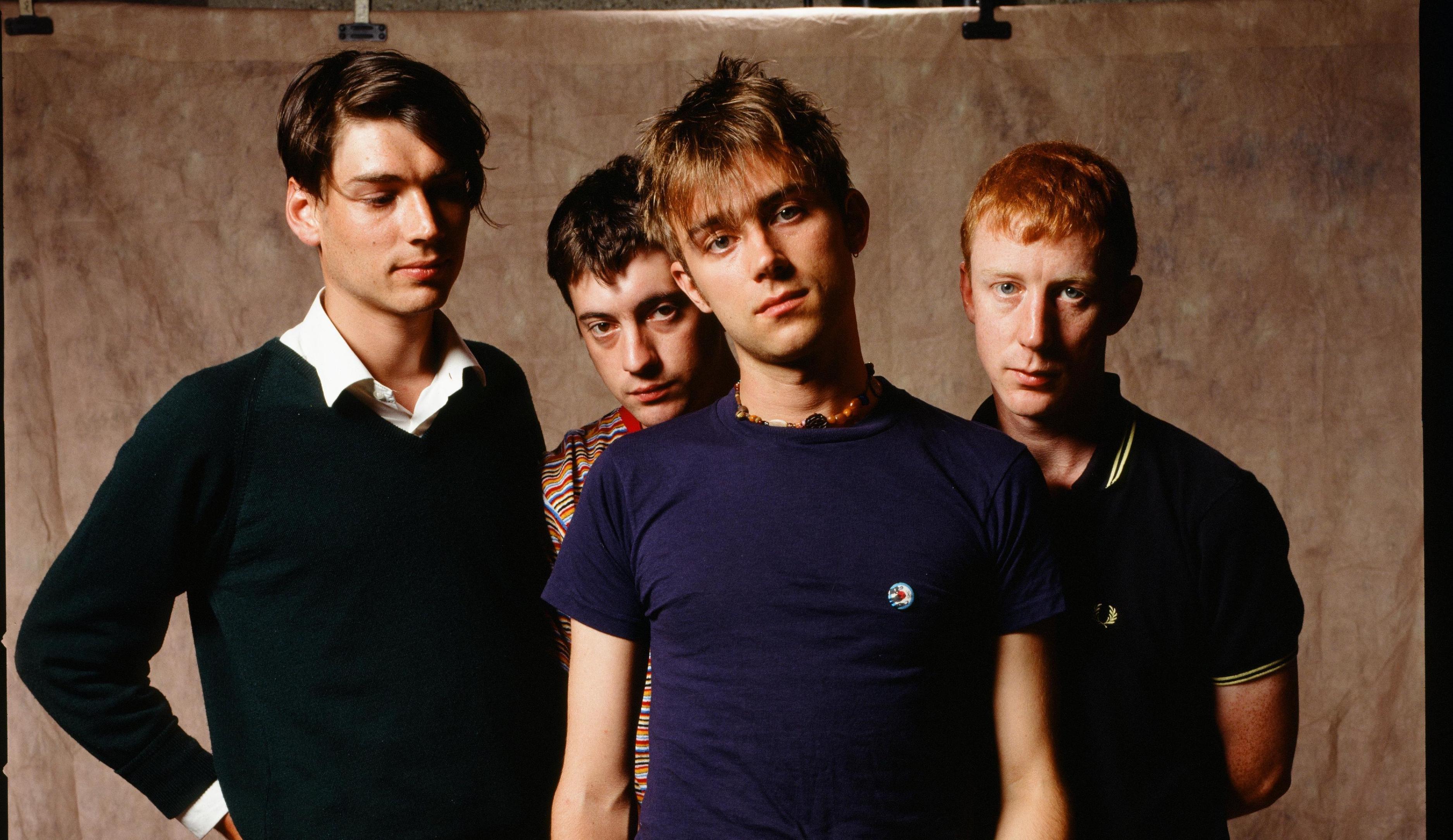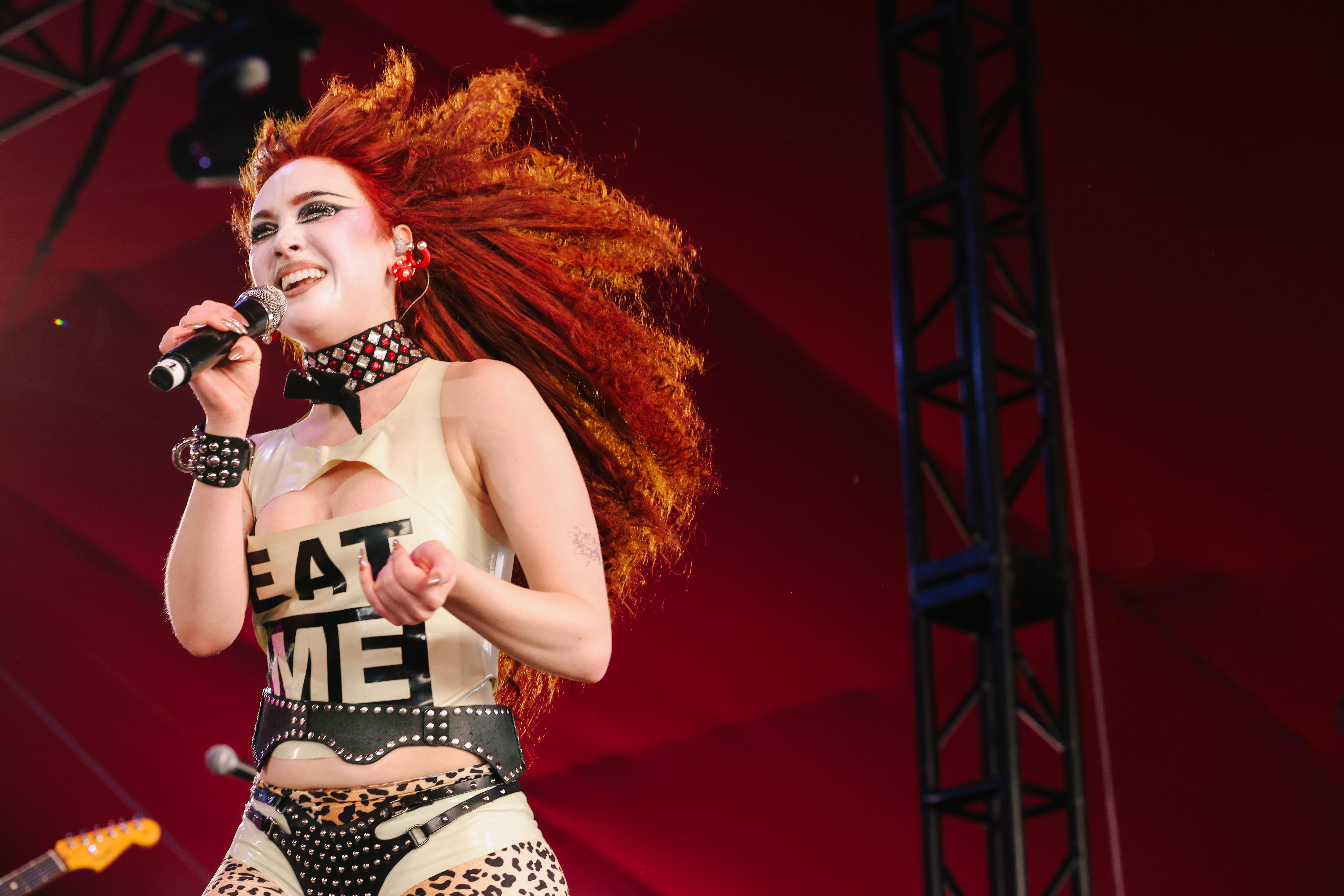In the run-up to the new millennium, Daft Punk transformed from shy Frenchmen into inhuman icons. The robot era, as Thomas Bangalter and Guy-Manuel de Homem-Christo told it, began with a studio accident on September 9, 1999 that blew up their equipment and changed the essence of their being.
As the story went, the culprit was the little-known '9999' bug, which erased all the music they'd been working on in human form. Their only choice was to carry on as androids. "I think everything was erased," Bangalter told The Face magazine in 2000 with a palpable shrug. "We had to start all over again." Details were intentionally hazy, but one thing was made clear: the robots weren't new characters or alter egos. Daft Punk was still the same Thomas and Guy-Manuel, reborn with circuit boards and chrome headgear.
Daft Punk's robot reinvention set the stage for their much-anticipated second album, Discovery. Released internationally in March of 2001 by Virgin Records, Discovery was a clear evolution from the duo's 1997 debut album, Homework. That record was a rough and ready riff on US house and techno with a distinctly French accent, spawning instant classics like "Da Funk", "Around The World" and "Rollin' & Scratchin'". On Discovery, Daft Punk went maximalist, bringing in '80s-tinged pop, funk and arena rock alongside a shinier house sound.
"We didn't want in any way to do what we did on the first album," Bangalter told Big Shot in 2001. If Homework made Daft Punk into much-imitated house heroes, Discovery signaled their arrival as pop superstars, charting the duo's course for the next two decades.
Discovery came out of an intensely creative period for Daft Punk. After releasing Homework in their early 20s, the childhood friends toured non-stop throughout 1997, playing to dark, strobe-lit rooms from behind a hardware bank. (They didn't wear masks on stage, but stayed in the shadows.) The pair began concerted work on Discovery in 1998, returning to their Paris studio crowded with drum machines, vintage keyboards, guitars and synthesizers.
<style>.embed-container { position: relative; padding-bottom: 56.25%; height: 0; overflow: hidden; max-width: 100%; } .embed-container iframe, .embed-container object, .embed-container embed { position: absolute; top: 0; left: 0; width: 100%; height: 100%; }</style><div class='embed-container'><iframe src='https://www.youtube.com/embed/XlUutoCywnk' frameborder='0' allowfullscreen></iframe></div>
"We don't argue about who's playing what," de Homem-Christo told Mix in 2001. "You can get the sound of a guitar with a keyboard or the opposite." As well as lifting samples from dusty soul and disco records, the duo sampled their own studio jams. "We don't use too much of the sound of the instruments; it's really more about how we put effects on it after that," de Homem-Christo added.
From 1998 into 2000, Daft Punk channeled the open-hearted passions of their childhood years, without worrying about what was cool. "When you're a child, you don't analyze music," Bangalter told Remix Mag in 2001. "You just like it because you like it."
Daft Punk released the album’s lead single, "One More Time", in November of 2000. With producer and singer Romanthony's bright, autotuned vocals riding an exultant house melody, the song introduced Daft Punk's youthful vision. As disciples of New Jersey house and garage, Bangalter and de Homem-Christo were thrilled to meet Romanthony at the Miami Winter Music Conference in 1996. Together, they created one of Daft Punk's signature hits, which went on to earn a Best Dance Recording nomination at the 2002 GRAMMYs (the duo's third in the category, following "Da Funk" in 1998 and "Around the World" in 1999).
<style>.embed-container { position: relative; padding-bottom: 56.25%; height: 0; overflow: hidden; max-width: 100%; } .embed-container iframe, .embed-container object, .embed-container embed { position: absolute; top: 0; left: 0; width: 100%; height: 100%; }</style><div class='embed-container'><iframe src='https://www.youtube.com/embed//FGBhQbmPwH8' frameborder='0' allowfullscreen></iframe></div>
The months between "One More Time" and Discovery allowed fans to obsess over Daft Punk's new appearance. The duo developed the robot design with music video directors Alex and Martin (including initial anime-inspired helmets with hair), then engaged special effects guru Tony Gardner at Alterian Inc. to make them real.
Bangalter's look was modeled on the robot Gort from 1951 sci-fi classic The Day The Earth Stood Still, while de Homem-Christo's helmet featured a vertical LED display. The design continued to evolve in the years after Discovery, leading to the reveal of the red light-up helmets atop the pyramid at Coachella in 2006.
"We didn't want to do 15 house tracks on one album," Bangalter said of Discovery in his Big Shot interview. For all its scope and ambition, though, the album is a celebration of dance music at its heart—a feeling that's never clearer than in its first four songs, each released as a single. "One More Time" defies the cliche of the moody album opener, starting instead at warp speed.
From there, listeners are treated to the in-your-face guitar and bells of "Aerodynamic", the doe-eyed synth-pop of "Digital Love" (co-written by Daft Punk ally DJ Sneak) and "Harder, Better, Faster, Stronger", which twisted a funk riff from Edwin Birdsong's "Cola Bottle Baby" into a house steamroller. Most artists would avoid front-loading all the hoped-for hits, but Daft Punk knew they had plenty more in the tank.
<style>.embed-container { position: relative; padding-bottom: 56.25%; height: 0; overflow: hidden; max-width: 100%; } .embed-container iframe, .embed-container object, .embed-container embed { position: absolute; top: 0; left: 0; width: 100%; height: 100%; }</style><div class='embed-container'><iframe src='https://www.youtube.com/embed/L93-7vRfxNs' frameborder='0' allowfullscreen></iframe></div>
After the rush of its opening salvo, Discovery keeps switching the dial. Between the racing "Crescendolls" and thumping "Superheroes" (which sounds like a buffed and polished leftover from Homework), "Nightvision" offers an airy breather. "Something About Us"—released as the 'love theme' for Daft Punk's 2003 animated movie, Interstella 5555: The 5tory of the 5ecret 5tar 5ystem—sounds like a template for the cruisy vibe of the duo's fourth and final album, Random Access Memories.
<style>.embed-container { position: relative; padding-bottom: 56.25%; height: 0; overflow: hidden; max-width: 100%; } .embed-container iframe, .embed-container object, .embed-container embed { position: absolute; top: 0; left: 0; width: 100%; height: 100%; }</style><div class='embed-container'><iframe src='https://www.youtube.com/embed/sOS9aOIXPEk' frameborder='0' allowfullscreen></iframe></div>
One of the album's best stretches covers the rubbery bass of "Voyager" to the Giorgio Moroder-inspired synth excursion "Veridis Quo" to the freakout funk of "Short Circuit". In this stacked middle, there's a personal favorite for every kind of Daft Punk fan.
Daft Punk closed Discovery with two deeply-felt songs. "Face to Face" features vocals by New Jersey garage pioneer Todd Edwards, while Romanthony returns on the ten-minute closer, "Too Long". (Daft Punk namechecked both artists in a roll-call of their musical heroes on Homework cut "Teachers".) The songs are the most faithful evocations of classic house on Discovery, keeping the natural depth and clarity of both voices.
<style>.embed-container { position: relative; padding-bottom: 56.25%; height: 0; overflow: hidden; max-width: 100%; } .embed-container iframe, .embed-container object, .embed-container embed { position: absolute; top: 0; left: 0; width: 100%; height: 100%; }</style><div class='embed-container'><iframe src='https://www.youtube.com/embed/dKJfJMMsqX4' frameborder='0' allowfullscreen></iframe></div>
"Their music had a big effect on us," Bangalter explained to Remix Mag of Edwards and Romanthony. "Because they mean something to us, it was much more important for us to work with them than with other big stars." Notably, Daft Punk followed Discovery with the October 2001 release of Alive 1997, featuring a live recording from their post-Homework tour. Between the warmth of "Face to Face" and "Too Long" and the raw energy of Alive 1997, the duo took care to honor the past.
Discovery took on a new light six years later with the release of Alive 2007. The duo's second live album, recorded in Paris midway through the pyramid tour, features songs from every Daft Punk era spliced together live. In these newly adrenalized versions, familiar song elements—from the jet-fueled "Da Funk" bassline to the indelible melody of "Music Sounds Better With You" from Bangalter’s Stardust project—turn up in unexpected and thrilling ways.
After years of rinsing Alive 2007, it can be hard to hear the original "One More Time" without expecting the burst of "Aerodynamic" guitars, or "Harder, Better, Faster, Stronger" without traces of "Around The World" and an arena-tooled kick-drum. While Alive 2007 makes every Daft Punk song sound like it came from the same supercharged album, we can thank Discovery for the show's tingliest moments.
Discovery had an immediate impact on 2000s music. The album brought wider attention to the French house scene, which led Daft Punk's then-manager Pedro Winter (aka Busy P) to establish Ed Banger Records as an outlet for artists like Justice, DJ Mehdi, Cassius and Breakbot. Kanye West sampled "Harder, Better, Faster, Stronger" on his 2007 single "Stronger", then convinced the duo to make a cameo during his GRAMMYs performance in 2008. (Daft Punk later appeared as producers on West's searing 2013 album, Yeezus.)
<style>.embed-container { position: relative; padding-bottom: 56.25%; height: 0; overflow: hidden; max-width: 100%; } .embed-container iframe, .embed-container object, .embed-container embed { position: absolute; top: 0; left: 0; width: 100%; height: 100%; }</style><div class='embed-container'><iframe src='https://www.youtube.com/embed/PsO6ZnUZI0g' frameborder='0' allowfullscreen></iframe></div>
A new generation of dance acts, including Disclosure, Madeon and Porter Robinson, are indebted to Discovery. Others, like Deadmau5, took inspiration from the robot aesthetic for live shows. Following Daft Punk's "Epilogue" in February, Porter Robinson summed up his feelings in a tweet: "Thinking about how every stage of my life would have gone so differently if it weren't for Daft Punk."
One of the most intriguing documents of the Discovery era is a promo video the duo shot in Japan. Fully outfitted in their new get-up (complete with backpacks containing their power supply), the robots pose with manga artist Leiji Matsumoto and roam the streets of Tokyo. In voiceover, Bangalter and de Homem-Christo tell the story of the album in tentative English. Their goofy dancing and natural speaking voices recall a more innocent time before Daft Punk became truly reclusive.
"It's the first album we're making as robots," Bangalter explains over footage of the pair pranking shoppers and riding the Tokyo subway. "It's a mix between the new chip we have in our brain and the fact that we still have a heart and a heartbeat." Electronic music with a beating heart: that's the magic of Discovery.
Tron: Legacy At 10: How Daft Punk Built An Enduring Soundtrack





